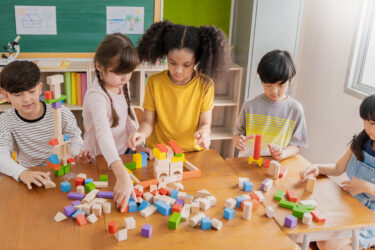I was recently watching, along with just about every other person with a Netflix account, Marie Kondo’s “Tidying Up.” I was happy to hear her ask a couple if their kids knew how to clean up. They seemed a bit surprised at this question, and I found myself talking out loud to the mom on the show. “You are not the house elf!” I told her.
I wear a lot of hats – wife, mother, friend, educator, student and more – but there is one hat that I refuse to wear, and that hat is the “family house elf,” aka maid!
The very next day, I was talking with my dad on the phone. I prompted my daughter to pick up the clothes off her bedroom floor. He responded, “Do your kids know how to pick up after themselves?” I am certain that as soon as he asked that question, he regretted asking it because I quickly went into “Behavior Momma” mode and told him exactly how and why they help clean up around our house.

How do my kids help around the house?
- Through teamwork, they make their beds
- They pick up their bedroom floor and desks
- Wipe down the sinks in their respective bathrooms
- Pick up toys inside and outside
- Throw away/recycle empty containers or snack bags
- Push in their chairs and clear their plates (they are starting to learn how to load/unload the dishwasher, too!)
- Vacuum
- Sort clothes and put away their clean clothes
Why should you teach your kids to clean?
- It is their house, too!
- If they made the mess they should clean it up.
- Teachers don’t follow your child around at school cleaning up after them, they are expected to clean up themselves.
- It teaches life skills. Someday they will have a home of their own and need to have the skills to keep it tidy, because mommy isn’t going to drive over to clean it.
- It helps get chores done in a shorter amount of time which opens more time for family fun.
Teaching your children to help clean up does not happen overnight. It takes time and patience. For younger children (babies/toddlers) you can start by going hand over hand to show them how to clean up. You can also make it a fun game, “My turn! Your turn!” Make sure you provide constant praise for each toy that is put away. As kids get older, you can add a timer to the mix. “I am going to set the timer for 10 minutes. At the end of 10 minutes any toys that are still left out will go in toy time away.” The Pratt family toy time away was above the fridge so my kids could see their precious toys, but not be able to play with them. How did they get their toy(s) out of toy time out? They had to do a chore to get it back. As kids get older, you can continue to add additional responsibilities and continue to praise their contribution to the family home all the while knowing that you are helping create life skills for your child while not being the family house elf.





